You are here
Celebrating the Restoration
| Title | Celebrating the Restoration |
| Publication Type | Book Chapter |
| Year of Publication | 2020 |
| Authors | Welch, John W. |
| Book Title | John W. Welch Notes |
| Chapter | 14 |
| Pagination | 307-314 |
| Publisher | Book of Mormon Central |
| City | Springville, UT |
| Keywords | Book of Mormon Translation; Church Administration; Church History; First Vision; Pearl of Great Price; Restoration; Smith, Joseph, Jr. |
Show Full Text
Celebrating the Restoration
John W. Welch Notes
Day 1: Seeing the Hand of God in History
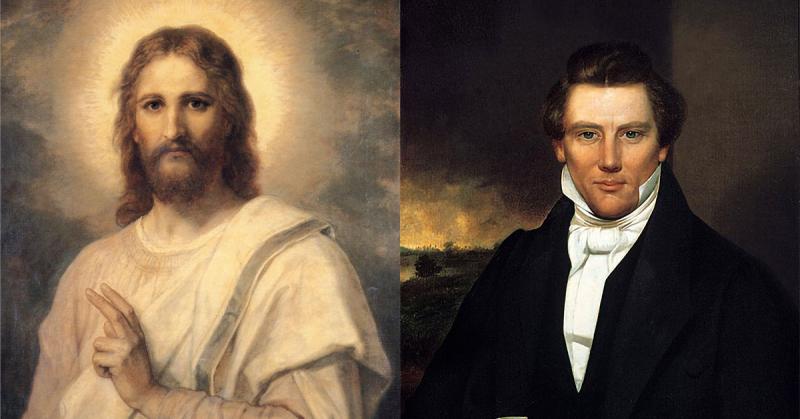
Figure 1 Figure of Christ by Heinrich Hoffman and Portrait of Joseph Smith likely by William Warner Major. Images via Wikmedia Commons.
Twenty-five years ago, I was deeply struck, seeing up close many striking details present in the rise of Christianity two thousand years ago with parallels in the rise of the Restoration of the Gospel of Jesus Christ two hundred years ago. At that time, I was teaching a course at BYU on Masada and the world of the New Testament. At the same, I was editing BYU Studies and Church history publications for the Joseph Fielding Smith Institute at BYU.
Fascinatingly, the social and historical developments that set the stage for Jesus Christ have strong counterparts in the cultural and religious developments that prepared the way for the Restoration of the Gospel by Joseph Smith. As I began tabulating these parallels, the case became stronger and more interesting than I had ever surmised. I ended up publishing the following article about these similarities that exist between early Mormonism and early Christianity.
I have spent much of my life studying these two focal points in world history. It makes sense that certain things needed to be in place in order for Jesus to have had even a chance of accomplishing his mission, attracting a committed following, and leaving a lasting legacy. Many of those same conditions also needed to be present in order for Joseph Smith to fulfill his calling, to find converts in large numbers, and leave his indelible impact on the world. Both Jesus and Joseph spoke words that were treasured, written down, and published widely. Both Jesus and Joseph ordained leaders, established an organization that could carry forward after their martyrdoms, only 33 and 38 years after their births.
Down to minute details, these comparisons show that if either Jesus or Joseph had been born 30 years earlier, they would have been born in tumultuous times at the beginning of new political regimes, either under King Herod or in the Revolutionary War. Getting even a foothold would have been scarcely possible. Had either of them been born 30 years later, they would have been overwhelmed with devastating civil wars, the Jewish War in the 60s or the War between the States in the 1860s. Either way, they could not have accomplished most of what they needed to do. The window was tiny.
As my article indicates, these unique conditions offer a cumulative case of impressive evidence that the hand of God was at work in these two parallel moments in the history of the salvation of all the world. Four charts (Tables 1, 2, 3, 4) make it easy for readers to scan through the lists of these crucial developments. They began over three hundred years beforehand, preparing the way for the impacts of the long-awaited and foreordained lives of the promised Savior Jesus Christ and of his prophetic Restorer Joseph Smith.
Table 1: Parallels in Preparations and Historical Settings
|
Early Christianity |
Early Mormonism |
|
c. 330 B.C. Alexander the Great spreads widely the new influence of Hellenism and rationalism, Plato, Aristotle, Zeno, Epicurus |
c. 300 years before Joseph Smith, rationalism, Renaissance and Reformation widely influential, Copernicus, Columbus, Luther, Descartes |
|
Septuagint Greek version of the Old Testament is translated by c. 200 B.C., becomes accepted as standard by many Jews, translated by 70 scholars into the common daily language, used heavily in early Christian writings |
The King James Version is completed in 1611, 200 years before Joseph Smith, becomes accepted as the standard English Bible, translated by 55 scholars into the common daily language, used heavily in Restoration writings |
|
167 B.C. Maccabean revolt against Seleucids in Jerusalem, reign of strict Jews, their descendants become the Pharisees, purists, separatists |
165 years before Joseph Smith, Cromwell rebels in 1640, strict Puritans reign, their descendants flee from secularism |
|
Battle of Actium, 31 B.C., Augustus Caesar defeats Anthony and Cleopatra, ushering in a new era of Roman government and society |
30 years before Joseph’s birth in 1805, the American Revolution dramatically begins a new era, George Washington defeats the British |
|
The Pax Augusta affords worldwide peace, general civil and individual freedom with unprecedented optimism and unity |
United States Constitution and Bill of Rights protects individual freedoms, promotes peace and engenders great optimism and unity |
|
Old aristocratic arrangements overthrown while underlying Roman mores remain in place, period of legal transition, new horizons beckon |
Tory ties to England broken while underlying common law and economy remains in tact, period of legal transition, new frontiers beckon |
|
Romans very attentive to their own gods while mostly tolerating the worship of other gods such as Isis, Mithras, a pluralistic religious world |
Most states and religious groups very attentive to their own observances while mostly tolerating religious freedom, a pluralistic religious world |
|
Religious freedoms for the Jews are protected by legal decrees by Julius Caesar and others |
Religious freedom is specifically protected by bills of rights and constitutional provisions |
|
Opportunity to form private organizations, including funerary collegia, client cults, house churches, business partnerships |
Freedom of association is protected, the rise of corporations and trusts allow formation of private religious and business organizations |
|
Expansion of Roman road system, travel becomes common over considerable distances. Paul travels extensively, including trips to Asia Minor, Greece, Jerusalem, and Rome |
Opening Cumberland Gap, canals and federal roads allows for explosive mobility. Joseph Smith travels extensively, including 4 trips to Missouri, others to Boston, Canada, and Washington |
|
Mediterranean made safe for sea travel as pirates are eliminated, harbors built |
Safety and efficiency of Atlantic crossings allow missionary travel, immigration, piracy controlled |
|
Economic expansion in Judea under Herod the Great produces unprecedented prosperity, independent opportunities, fabulous construction projects, worker dislocations, family and social changes |
Economic opportunism blossoms with new markets, financial independence and ability, the Erie Canal, western boom towns along the Mississippi, bringing personal mobility, family and social changes |
|
Roman innovation brought an age of new construction, engineering, and science, building aqueducts, roads, harbors |
Industrial revolution brings new age of innovations and inventions, making of steam engines, railroads, machines |
|
Education and literacy is high, even higher than once thought, noticeably among Jews |
Education and literacy is widespread and highly valued, converts are educated readers |
|
Greek is spoken as the common language in the eastern empire, a second language in the west |
English as a widespread language carried abroad by the expansion of the British empire |
|
Books, parchment production, scrolls, and libraries are more common and available, a blossoming of literature, Horace, Virgil |
Printing presses, books, newspapers, and libraries are available in most towns, blossoming of romantic literature, transcendentalism |
|
A time of individual religious choice, particularly between many Jewish sects and movements, Pharisees, Sadducees, Essenes, as well as devotees of numerous Greek and Roman gods, Stoics, Cynics, Epicureans, and others |
A time of personal religious choice in America, between many churches, Congregationalists, Episcopalians, Methodists, Baptists, Catholics, Quakers, Mennonites, Unitarians, Seekers, Transcendentalists, and others |
|
Religious controversy is bewilderingly common, spontaneous religious questions and arguments especially in Jewish culture |
Religious controversy is an ordinary part of public discourse, strong opinions on religious issues mattered to individuals in America |
|
Old religions threatened, for example Artemis cult in Ephesus (Acts 19), old ways becoming expensive to maintain |
Old religions are vulnerable to revivals, reforms, new religions offer less expensive and challenging alternatives |
|
Messianic expectation is high, ideal utopian age expected by many groups, religious agitation is high, large crowds come out to see John the Baptist or Jesus |
Apocalyptic fervor is high, millenarianism is popular, visionary utopian societies flourish, religious frenzy is high, large crowds gather for revivals throughout the country |
|
Divination, incantations, exorcism, mysticism present in respectable popular culture |
Visions, dreams, seers, amulets, supernaturalism present in respectable popular culture |
|
Galilee, an expansion area for Jewish settlement in the first century before Christ |
New England, an expansion area for settlement in the eighteenth century |
|
Galilee, stony soil, demanding hard work, harboring revolutionary tendencies, freedom Zealots distrusted |
New England, stony soil, hard work, revolutionary independence, freedom advocates disdained |
|
Rise of powerful parties battling for control in the Jewish world, Sadducees, Pharisees, Zealots |
Rise of political parties struggling for control over state, regional, and federal politics |
|
Christians flee Jerusalem, James (brother of Jesus) killed, Christians dispersed, Peter, Paul and others martyred, nowhere to gather |
Exodus of Mormons out of Illinois, Joseph and his brother Hyrum martyred, the Saints trek across the Plains and gather to Zion |
|
Jewish Civil War (4 years long) and destruction of the Temple, A.D. 66–70, about 35 years after the ministry of Jesus |
American Civil War (4 years long), devastation of Missouri and elsewhere, 1861–1865, 31–35 years after the organization of the Church |
Table 2: Comparable Foundings: Jesus and Joseph Smith
|
Early Christianity |
Early Mormonism |
|
Jesus’ ministry appears suddenly, is dramatic, innovative, controversial, and polarizing |
Joseph Smith’s ministry is sudden, dramatic, innovative, controversial, and polarizing |
|
The new religious movement is initiated by angels appearing to Zacharias, Mary, Joseph, the shepherds at Bethlehem; Gabriel appears at least five times |
The new religious movement is initiated by angels including Moroni, John the Baptist, Peter, James, John; Moroni appears at least twenty times |
|
The voice of God the Father at baptism acknowledges the Son |
God the Father at the First Vision introduces the Son in similar words |
|
Opposition by Satan, temptations of Jesus, expelling devils |
Confrontations with Satan and his forces, exposing angels of darkness |
|
The movement grows around a central kinship family, that of Jesus, Mary, John the Baptist, James the brother of Jesus, John |
The movement centers on the Smith family, Joseph Sr., Lucy, Joseph, Emma, Hyrum, Samuel, uncles, cousins |
|
Family ties are crucial among the earliest converts: Peter and Andrew; the sons of Zebedee; family of Lazarus, Mary, Martha |
Family ties are close among the Smiths, the Whitmers, Knights, Johnsons, Pratts, Snows, and many other member families |
|
Jesus is a remarkable youth, answering the rabbis questions at the temple and teaching in the synagogue |
Joseph Smith at young age translates, gives bold new answers to prevailing questions |
|
Memories and sayings are preserved, letters and books are written and kept very early |
Extensive record keeping from the beginning, revelations recorded, diaries and minutes kept |
|
Various accounts survive of baptism of Jesus |
Various accounts survive of the First Vision |
|
Jesus and Paul preach in the synagogues |
Missionaries preach in others’ churches |
|
Jesus opposes the temple establishment, runs counter to the prevailing culture |
Joseph Smith opposes many democratic themes, runs counter to dominant politics |
|
Moses and Elijah with Peter, James and John on Mount of Transfiguration; Jesus draws strength by association with powerful figures |
Appearances of Moses, Elijah, Peter, James and John; Joseph draws strength by connection with powerful past figures |
|
House churches at first, in Capernaum, Thessalonica, Philippi, Corinth |
House churches at first, Peter Whitmer farm, John Johnson home |
|
Some teachings not openly shared with all, cast not your pearls or holy things before the dogs (Matthew 7:6) |
Ritual teachings kept esoteric, sacred, certain teachings or experiences not openly taught at first |
|
Jesus and the Temple, he always went there when in Jerusalem, taught there daily, healed there, would rebuild the temple |
Joseph Smith and the Temple, always concerned about establishing temples in Kirtland, Independence, Far West, Nauvoo |
|
Jesus and missionary fervor, very early, sent out the Twelve and then the Seventy, eventually to remote locations |
Joseph and missionary fervor, at time of great risk, sent out the Twelve and then Seventies, eventually to remote locations |
|
New scripture created, Christian texts added to Jewish |
New scripture created, Mormon revelations added to Jewish and Christian writings |
|
Bold new practices, some do not last, such as holding property in common |
Bold new practices, some do not last, such as united order, wealth redefinition |
|
Great promises of exaltation, entering God’s presence and obtaining all, testimonials of benefits in spite of costs |
Great promises of exaltation, becoming as God and progressing eternally, testimonials of benefits in spite of costs |
|
Built on ideas found in the basic surrounding culture, parallels can be seen in some of the Dead Sea Scrolls and contemporary writings |
Built on words and attitudes in surrounding environment, parallels can be found in the nineteenth-century religious milieu |
|
Cultural continuity with conventional Jewish religion was high |
Cultural continuity with conventional Christianity was high |
|
Heavy dependence on the Old Testament, making strong truth claims about the original meaning of old scripture |
Heavy dependence on the Old and New Testaments, making strong truth claims about understanding their original meanings |
|
Readapting broad Old Testament themes for Christian purposes |
Reworking of biblical themes for Mormon purposes |
|
Claims of power to speak and act with divine authority |
Claims of authority to speak and act with divine authority |
|
Pre-creedal statements of belief are fluid, simple |
Early articles of faith are fluid, uncomplicated |
|
Cosmic signs, star at the birth of Christ, omen at death of Herod Agrippa |
Stars fell in Missouri, 1833, seen as a sign of heavenly import |
|
Prophecy about impending destruction, apocalyptic eschatology (see Matthew 24) |
Prophecy about impending millenarian destruction, the last days (see D&C 45) |
|
Miracles of Jesus are impressive and abundant |
Miracles of Joseph are important and persuasive |
|
Fears of occult powers are part of the undoing of Jesus after the raising of Lazarus, as seen in the accusation that he was a trickster |
The undoing of Joseph Smith is traceable to his claims of access to the supernatural, suspicions that he was a deceiver |
|
Violent crucifixion of Jesus, age 33 |
Violent shooting of Joseph Smith, age 38 |
|
Death of Jesus is caused by the failure of Pontius Pilate to protect him |
Death of Joseph is caused by the failure of Thomas Ford to protect him |
Table 3: Analogous Apostleships
|
Early Christianity |
Early Mormonism |
|
Uncertainty about immediate apostolic succession in leadership in Jerusalem, Corinth, after the unexpected death of Jesus |
Similar uncertainty about immediate apostolic succession in leadership in Nauvoo after the unexpected death of Joseph |
|
Group validation at Pentecost in Acts 2, rapid initial growth, enthusiasm; validation of Peter as successor |
Group spiritual outpourings, rapid burst of growth, enthusiasm; validation of Brigham Young as successor |
|
Separation of spiritual and temporal administration by the early apostles in Acts 6 |
Division of responsibilities between Aaronic and Melchizedek priesthoods |
|
Joining requires little teaching; membership marked by baptism, Acts 3, 8 |
Converts join after little time or training; membership marked by baptism |
|
People join from all social and economic groups, but mainly middle class, unaffiliated |
People join from all strata of society, but mainly middle class, mobile |
|
Great success comes in territories that have been recently populated, Philippi, Corinth |
Great success comes in settling in expansion areas, Western Reserve, Missouri, Nauvoo |
|
Women play important roles in the community, exceeding the opportunities normally afforded in the surrounding culture |
Women given important roles, organization, vote, service, exceeding those normally afforded in nineteenth century culture |
|
Great interest in prophecy, foretelling the future |
Prevalence of futuristic speech, prophetic predictions |
|
Speaking in tongues in Acts, other gifts of the spirit in Corinth |
Speaking in tongues in Kirtland, other gifts of the spirit in Nauvoo |
|
Divisions arise quickly in Corinth and Galatia |
Divisions arise soon in Kirtland and Missouri |
|
False apostles reject Paul’s authority, apostasy underway |
Apostasy of half of the twelve apostles in Kirtland in 1837 |
|
Free riders and false prophets are dealt with severely; social costs of membership are high |
Nonconformists expelled quickly; distinctive stigmas of membership present entry barriers |
|
Leaders are often imprisoned; Peter, John, Paul in Jerusalem; Paul in Philippi, Caesarea |
Leaders are often imprisoned; jails in Richmond, Liberty, Carthage |
|
Paul rises above the rough treatment of the prison guard in Philippi |
Joseph rises above the vulgar treatment of prison guard in Richmond |
|
Paul articulates phrases that become elements in enduring statements of faith |
Joseph Smith articulates similar statements that become Articles of Faith |
|
Paul travels to Rome to plead his cause and to testify to Caesar |
Joseph travels to Washington to set his cause before the President |
|
Letters of Peter, John, James, Jude and Paul become scripture in the New Testament |
Joseph Smith’s letters are canonized in Doctrine and Covenants 121–23, 127–28 |
|
Concerns arise in Thessalonika and Corinth over those who had died before knowing the truth |
Concerns arise in Nauvoo over those who had died, such as Alvin, before the restoration of the truth |
|
Great promises, to become sons of God |
Great promises, to rise to celestial glory |
|
Earliest priesthood instructions in 1 Corinthians deal with administration of the sacrament |
Earliest instructions in the 1830 Articles and Covenants deal with administration of the sacrament |
|
Borrowing of Jewish psalms while writing new Christian hymns |
Borrowing of Christian hymns while writing new LDS hymns |
Table 4: Similar Aftermaths
|
Early Christianity |
Early Mormonism |
|
Ideological opposition through emperor-worship, this-worldliness |
Ideological opposition from secularism, atheistic scientism |
|
The end did not come as quickly as assumed (see 2 Peter 3:1–9), people adjusted |
The end did not come as expected, people need to adjust to unfulfilled expectations |
|
Jewish Civil War (5 years long) and destruction of the Temple, A.D. 66–70, 35 years after the ministry of Jesus |
American Civil War (5 years long) and devastation of Missouri, 1861–1865, 31 years after the organization of the Church |
|
Christians get out of Jerusalem, James (brother of Jesus) killed, Peter goes to Mesopotamia, Christians move to Pela[1] |
Mormons get out of Illinois, Joseph and his brother Hyrum killed, the Saints trek across the Plains |
|
Impact of Jewish War on Jewish history, loss of Jewish influence in Roman empire[2] |
Great impact of 1857 on Mormon history, Mormon isolation in the West |
|
No real gathering place, concentration in certain cities around bishops, Rome eventually becomes central in the West |
Gathering to Zion as focus of concentration except for dissenting groups, Salt Lake City becomes central in the West |
|
Struggle against multiple traditions and interpretations of Christ |
Struggle against many dissenters and early schismatic groups |
|
Some early Christians stop with the baptism of John (Acts 19:2), do not receive the Holy Ghost through the higher priesthood |
David Whitmer and some stop with events of 1829-31, baptism and initial teachings, do not accept the higher priesthood |
|
Sons of Sceva and early Jewish opponents to Christianity (Acts 19:14) |
Joseph Smith describes opposing Campbellite pamphleteers as sons of Sceva[3] |
|
Cultural baggage brought by converts into local congregations, hellenistic ideas, notions of Roman patronage, honor and shame |
Cultural baggage brought by converts into church thinking and writing, influence of Protestantism on Mormon writers |
|
Effect of loss of the Temple in Jerusalem, Christian envy of the temple |
Temporary loss of the temple in Nauvoo, continued focus on temples |
|
Memory of Jesus is transmitted by Paul and John to Polycarp and second generation |
Memory of Joseph is transmitted by Brigham Young and John Taylor to next generation |
|
Early Christians Polycarp and Ignatius focus on historical facts, later writers on theology |
Early Mormons stand more on historicity of founding events, less on theology |
|
Religion is based on narrative theology, not systematic theology |
Religious expression is based on episodes and personal experiences, not theory |
|
Docetists are scandalized by supernatural elements in Christ |
RLDS and secular Mormons minimize miraculous beginnings of Mormonism |
|
Doctrinal disputes arise very early, alternative teachings abound |
Doctrinal disputes and dissenting group form very early |
|
Concern over asserting and establishing orthodoxy in the face of diverse heresies, Gnostics, Jewish syncretists, or secularists |
Concern over asserting and establishing orthodoxy as divergent groups arise, Rigdonites, Godbeites, Reorganites |
|
Public concerns and doubts about loyalty of Jews and Christians to the Roman Empire |
Public concerns and doubts about Mormons, kingdom building and loyalty to United States |
|
Paul frequently in courts of law, early suspicions and legal trials of Christians in Pontus |
Joseph Smith frequently in courts of law, suspicious legal trials of Joseph Smith in New York |
|
Jews paint Christians in poor light, bad public image[4] |
Mormons receive terrible image in the establishment press |
|
Christians are considered to be fanatics |
Mormons are considered to be fanatics |
|
Christians are used as scapegoats for great fire of Rome by Nero[5] |
Mormons are used as scapegoats in 1857 U.S. politics |
|
Self-identity of Christians is established by martyrdoms of Ignatius, Polycarp, whose deaths come at crucial moment of failed expectations[6] |
Self-identity of Mormons is established in suffering and martyrdoms, which reinforce the faith at crucial moments of failed expectations |
|
Rise of apologetic and polemical writings as interaction with host culture increases |
Rise of apologetic debates as Mormons emerge in early twentieth century |
|
External discourse shifts to internal discourse in the late second century |
Some Latter-day Saints talking more in terms of the world in its second century |
|
Epidemics plague Roman empire allowing Christianity to grow more rapidly than the general population[7] |
U.S. Civil War and World Wars I and II allow for population advances of Mormons vis-a-vis the rest of the population |
|
Early Christians find theological meanings for suffering in God’s schooling[8] |
The Saints find theological meanings for suffering as valuable human experience |
|
Success of early Christianity is based largely on love and welfare to the sick and needy[9] |
LDS emphasis on charity and welfare, caring for the sick and the poor |
|
Callistus, bishop of Rome, approves just concubinage for Christian women[10] |
Mormon practice of plural marriage |
|
Importance of urban centers, urban Christianity in the second and third centuries |
Importance of stakes, missionary success in urban settings in modern era |
|
Diocletian’s first edict of 303 required confiscation of church property, meetings forbidden, second edict arrested clergy[11] |
Edmunds Act (1882) leads to the arrest of leaders, Edmunds-Tucker Act (1887) to the confiscation of church property |
|
Edicts requiring all inhabitants of the empire to sacrifice to Roman gods, on pain of death, selectively enforced[12] |
Extermination Order in Missouri, selectively enforced |
Further Reading
John W. Welch, “Early Mormonism and Early Christianity: Some Providential Similarities,” in Window of Faith: Latter-day Saint Perspectives on World History, ed. Roy A. Prete (Provo, UT: Religious Studies Center, Brigham Young University, 2005), 17–38. And reprinted in The Religious Educator.
Day 2: Accounts of the First Vision

Figure 2 The Sacred Grove. Photo by Ken Lund via Flickr.
How many accounts of Joseph Smith's First Vision in 1820 are there? Their sheer number can make things confusing. But the below article by Dean C. Jessee can be very helpful in answering this question. Reading the full texts of this whole collection of First Vision accounts was for me a powerful spiritual experience. The impact of these original writings is immeasurable. I recommend reading them slowly, thoughtfully, and at times even out loud.
Dean Jessee is the documentary historian whose work, beginning already in the 1960s, blazed the trail for the full Joseph Smith's Papers project that we now are blessed to have. Dean’s article, originally published in BYU Studies in 1969, as updated here for Joseph Smith's bicentennial in 2005, gives the complete texts of 8 accounts in Joseph's own first-person voice. It also includes 5 substantial accounts written by witnesses who had no doubt heard Joseph tell of this all-important experience.
The Joseph's main account of this stunning event is included in the Pearl of Great Price, which was canonized as scripture in 1880. See Joseph Smith's History (JS-H 1:8-26). Those verses are an extract from The History of the Church, which Joseph Smith began dictating in 1838. Thus, it is often called the 1838 account. It is by far Joseph's most familiar account.
All these accounts are commonly referred to by the year in which they were written, such as the 1832 account, or the 1835 accounts, etc. But all of them report things Joseph experienced in 1820. Sometimes people will refer to the "four" First Vision accounts, because the content of those four accounts is most similar. Several of these 13 accounts are also available on https://www.josephsmithpapers.org/
In addition, personal journals or recollections (not included here) of ten other people have been located, mentioning times when they heard Joseph tell about his First Vision. Although these usually short statements add little to our knowledge of what Joseph saw or heard in 1820, the quantity of these accounts confirms that Joseph spoke fairly frequently, openly, and candidly to a wide range of people, both in private or in public, about his first vision of the living Lord Jesus Christ.
Further Reading
Dean C. Jessee, “The Earliest Accounts of Joseph Smith's First Vision,” in Opening the Heavens: Accounts of Divine Manifestations, 1820–1844, edited by John W. Welch, 1–35. Provo, UT/Salt Lake City: BYU Press/Deseret Book, 2005.
Day 3: Differences and Similarities in the First Vision Accounts
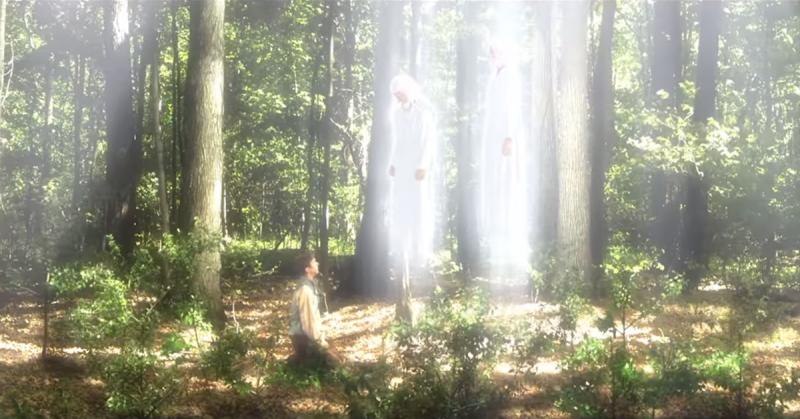
Figure 3Image from Ask of God: Joseph Smith's First Vision. Image via ChurchofJesusChrist.org
The article for today goes farther than any other publication in analyzing the elements mentioned by Joseph Smith in his accounts of his First Vision. The chapter below builds on an article published in 1970 by Professor James B. Allen in the official Church magazine, The Improvement Era. This chapter discusses in detail how the differences in these accounts can be understood.
A first step in understanding these accounts is to appreciate the various audiences that Joseph had in mind as he wrote or spoke about this overwhelming experience. This study offers a reader-response analysis for each of these accounts, suggesting how each audience would have heard Joseph's narrative. Usually it is clear that Joseph's style and also the details that he chose to include in each of his tellings were aimed at communicating most effectively with each audience in particular.
Next, this chapter organizes the details in these main accounts. Table 1 tabulates the circumstances or concerns that each account mentions as having played a role in leading up to the First Vision. Also in this table are particular rows helping to date the vision and in comparing the concerns that Joseph expressed in each account.
In Table 2, the details reported about Joseph’s quest and struggles in the grove are given. It is interesting to notice that some elements appear in several of these accounts, while other details appear only in a few. Interestingly, there is no particular chronological development evident in these scatter graphs. For example, some elements appear in the early accounts and also in the later accounts, but not in the middle accounts. These differences appear to be result of the various audiences and the lengths of time or space that Joseph had available for each of his tellings.
In Table 3, the data is organized showing what Joseph reported as having seen in each of these accounts. The various accounts do not contradict each other, but each adds to a full and interesting view of all that quite certainly happened in Joseph's original experience itself. Interestingly, no single detail is reported in every one of the accounts. On average, about four of the accounts will mention each of the points about what Joseph saw and asked.
And as seen in Table 4, the messages and information received by Joseph as this vision progressed are displayed. Joseph head and learned all that a person of his age and with his particular concerns could have asked for, and even more. At least ten different things were learned by Joseph Smith in the First Vision. In addition, he was told many other things that he was unable or told not to write.
Finally, Table 5 processes nine factors in the aftermath of the Vision. Five of the accounts mention only one aftermath, while three of them speak of Joseph being filled with calmness, comfort and peace. Five of them speak of Joseph’s interactions with other people shortly following his vision. Most of these efforts met with rejection, if not hostility.
These details all add up. They make sense, even though they were told at various times and to various audiences. They ring true. This is how true witnesses sound. They don't repeatedly give a rehearsed, stock account. They remember and include various details within the overall framework of their memory of what happened. For Joseph, the reality of having two personages appear, exactly like each other, and for God the Father then to introduce his Son Jesus Christ, saying "This is my beloved Son, hear him," was emblazoned upon his soul. This was the heart of Joseph's experience and testimony.
Further Reading
James B. Allen and John W. Welch, “Analysis of Joseph Smith's Accounts of His First Vision,” in Opening the Heavens: Accounts of Divine Manifestations, 1820–1844, edited by John W. Welch, 37–77. Provo, UT/Salt Lake City: BYU Press/Deseret Book, 2005.
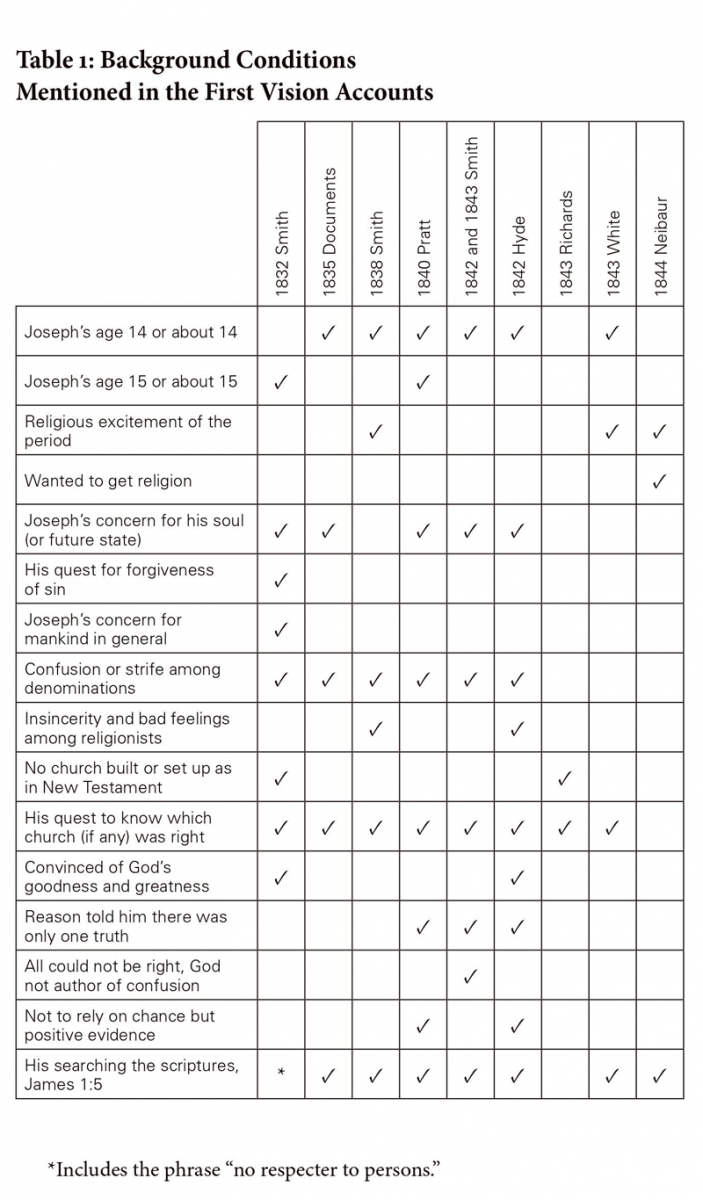
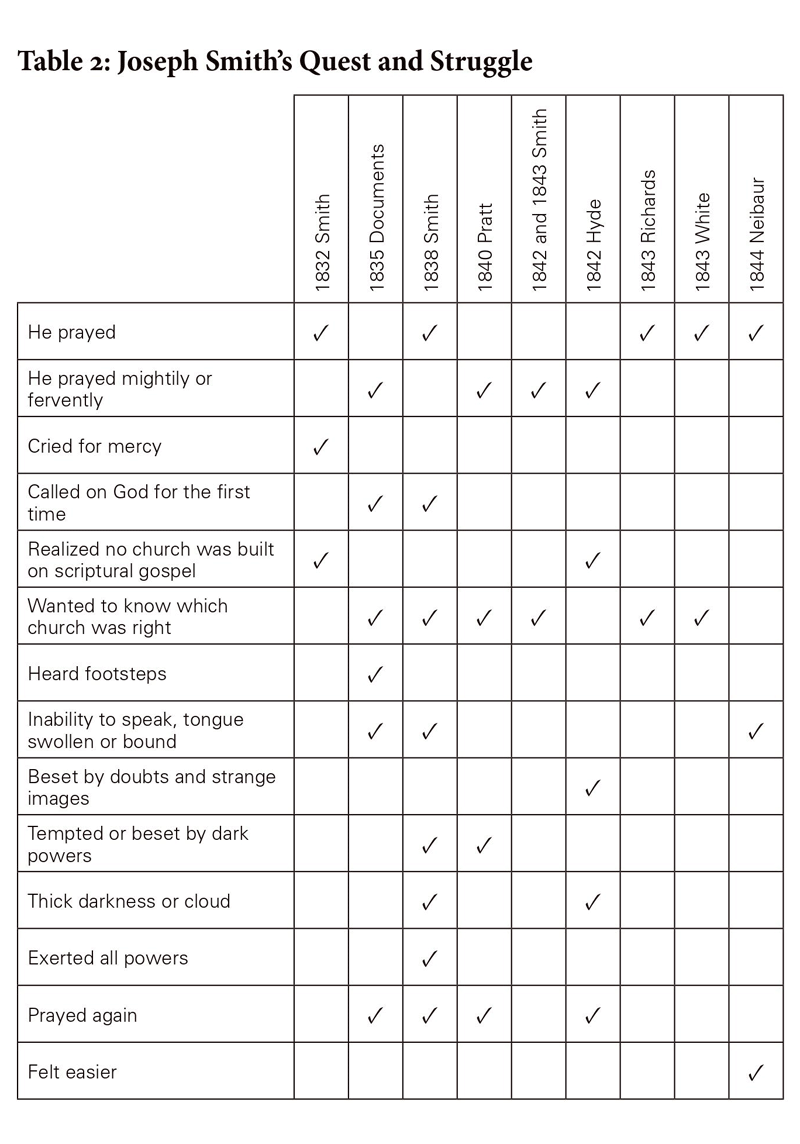
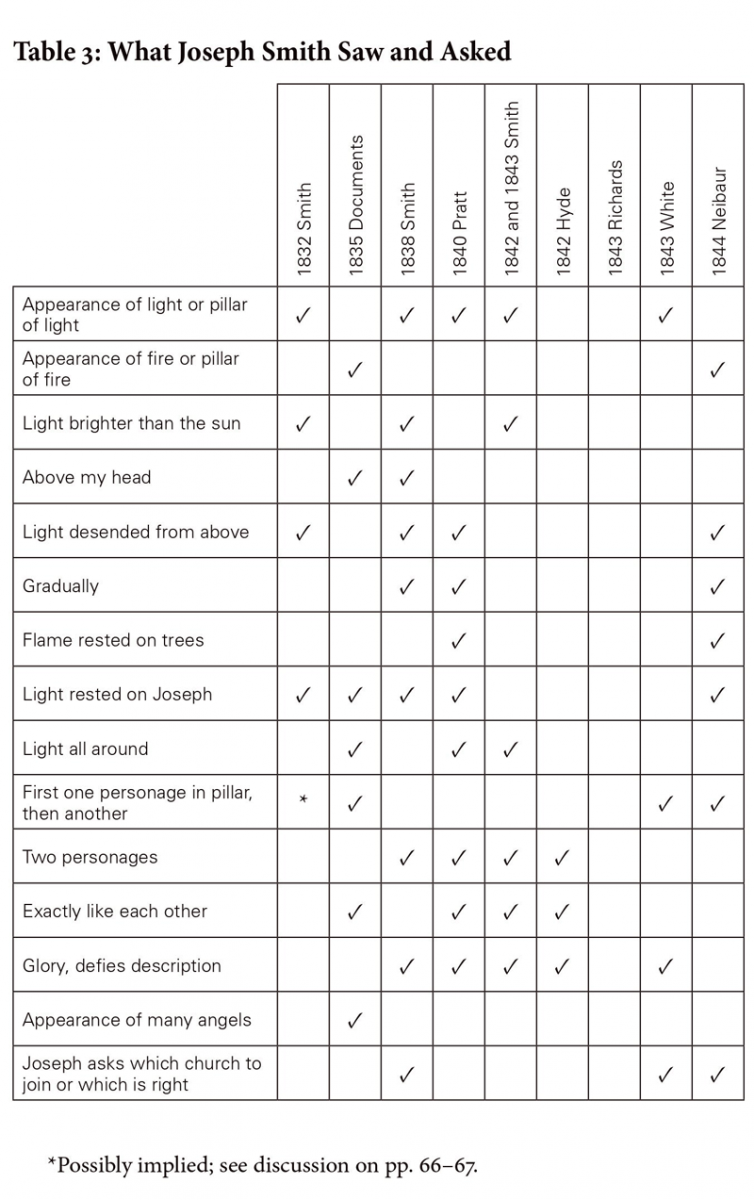
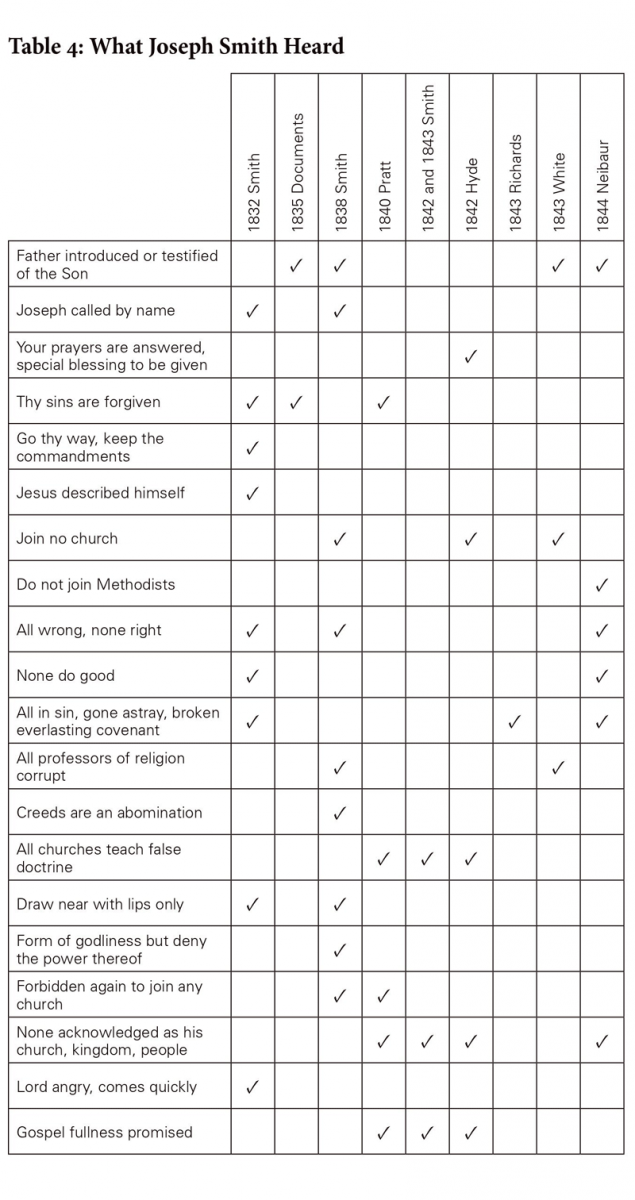
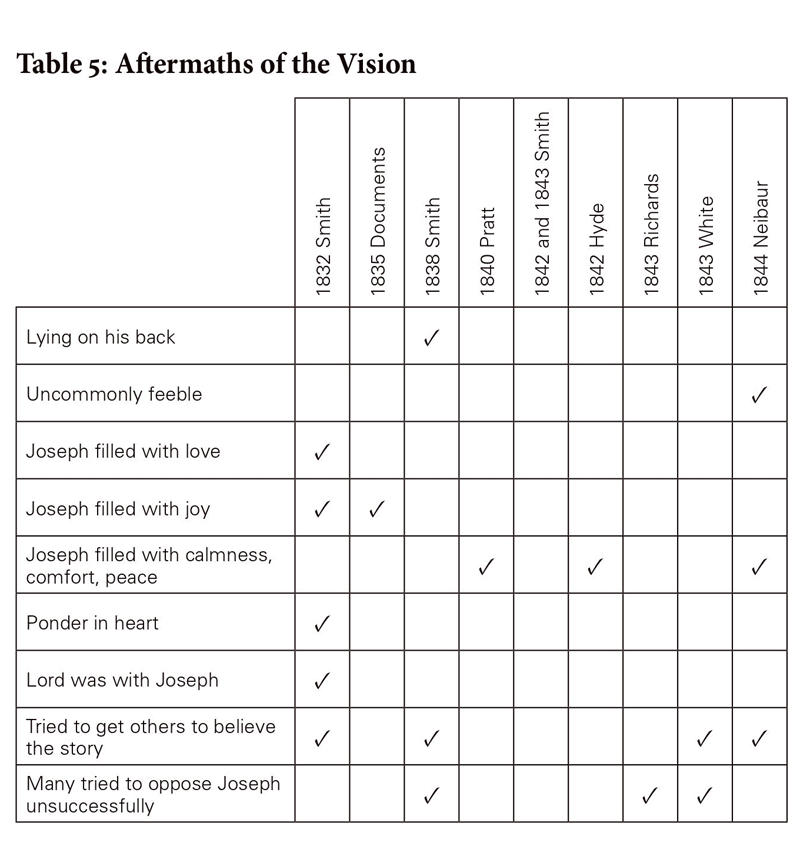
Day 4: Timing the Translation of the Book of Mormon
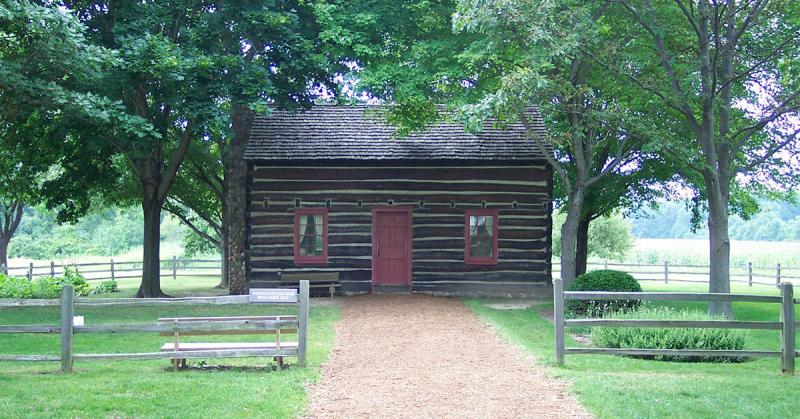
Figure 4 Peter Whitmer cabin in Fayette, New York. Photo by runt35 via Wikimedia Commons.
This next study for this week’s review is a detailed, documentary chronology of the events surrounding the translation and coming forth of the Book of Mormon. It is a convincing witness that Jesus is the very eternal Son of God and that God is still a God of miracles.
To say the least, lots of things happened, especially in the short period between April 5, 1829, and June 30, 1829. In all, it is amazing. So much was done, and some many records shed light on so many particulars. In the first 41 pages of “The Coming Forth of the Book of Mormon,” I provide a day-by-day factual record. Also included is a detailed, day-by-day chart, published by BYU Studies, showing where in the translation process Joseph and his scribes (mainly Oliver Cowdery) were each day from the beginning of April to June.
For a further analysis of the question, how long it took for Joseph to translate the Book of Mormon, see my recent article, “Timing the Translation of the Book of Mormon: ‘Days [and Hours] Never to Be Forgotten,’” BYU Studies Quarterly 57 no. 4 (2018): 10–50.
Amazingly, the translation of the Book of Mormon as we now have it took less than 65 actual days of translating. That is a lot less time than you might have thought, or than anyone can actually imagine. Four “anchor dates” solidly pin down the beginning, middle, and ending points in those days, which Oliver Cowdery later said, were “days never to be forgotten.” For a reality check, take a few minutes to at least scan and fathom the attached chart, which hopefully is self-explanatory.
Each of the historical facts in “The miraculous Timing of the Translation of the Book of Mormon” is established by sources mentioned in the footnotes or in the document section (quoting 206 documents!) of the longer of these two articles. That collection of primary source documents is 102 pages long. Reading even only a few of these accounts left by people who were closely involved in the coming forth of the Book of Mormon, or by others who were involved early enough in this historical development to have heard from these eye-witnesses, can be very moving for anyone, young or old.
I can't think of any other event in world history that matches the accomplishment of translating and bringing forth the Book of Mormon. The amount of consistent and coherent independent statements that document these day-by-day events is extraordinary.
There is surely more here than anyone can read in a day. That is not the purpose here. But everyone should know that this detailed history exists. It is credible. It is impressive. If you feel a bit overwhelmed, that's OK. Just think how Joseph, Emma, Oliver, Lucy Smith, Martin Harris, and the others involved in this daunting task must have felt!
Table 1: Estimated Day-by-Day Translation in 1829
|
Date (1829) |
Possible Chapters Translated |
Event |
|
March |
Mosiah 1 |
A few pages translated. The work of translation resumed where it left off after loss of the 116 pages in 1828.
|
|
April 5 Sun. |
|
Oliver Cowdery arrived in Harmony, Pennsylvania.* |
|
6 |
|
Joseph purchased property from Emma’s father.* About this time, D&C 6 was received, directed to Oliver Cowdery as he began serving as Joseph Smith’s scribe. |
|
7 |
Mosiah 2–4 |
Oliver began working as Joseph’s scribe.* |
|
8 |
Mosiah 5–7 |
|
|
9 |
Mosiah 8–11 |
About this time, D&C 8 was received, directed to Oliver about the power to translate. Compare Mosiah 8:11–16, speaking of King Mosiah’s power to translate. |
|
10 |
Mosiah 12–16 |
|
|
11 |
Mosiah 17–20 |
|
|
12 Sun. |
Mosiah 21–25 |
About this time, Oliver wrote a letter to David Whitmer. |
|
13 |
Mosiah 26–28 |
|
|
14 |
Mosiah 29 and Alma 1–2 |
|
|
15 |
Alma 3–6 |
|
|
16 |
Alma 7–10 |
|
|
17 |
Alma 11–13 |
|
|
18 |
Alma 14–17 |
|
|
19 Sun. |
Alma 18–19 |
About this time, Oliver wrote a second letter to David Whitmer. |
|
20 |
Alma 20–23 |
|
|
21 |
Alma 25–26 |
|
|
22 |
Alma 27–30 |
|
|
23 |
Alma 31–33 |
|
|
24 |
Alma 34–36 |
|
|
25 |
Alma 37–38 |
|
|
26 Sun. |
Alma 39–40 |
About this time, D&C 9 was received (compare D&C 9:14, “a hair of your head shall not be lost, and you shall be lifted up at the last day,” with Alma 11:44 or 40:23). |
|
27 |
Alma 41–43 |
|
|
28 |
Alma 44–45 |
|
|
29 |
Alma 46–48 |
|
|
30 |
Alma 49–51 |
|
|
May 1 |
Alma 52–54 |
Alma 55–57 |
|
2 |
Alma 55–57 |
|
|
3 Sun. |
Alma 58–61 |
|
|
4 |
Alma 62–63 and Helaman 1 |
|
|
5 |
Helaman 2–4 |
|
|
6 |
Helaman 5–7 |
|
|
7 |
Helaman 8–10 |
|
|
8 |
Helaman 11–13 |
|
|
9 |
Helaman 14–16 |
|
|
10 Sun. |
3 Nephi 1–3 |
|
|
11 |
3 Nephi 4–6 |
|
|
12 |
3 Nephi 7–10 |
|
|
13 |
3 Nephi 11–12 |
|
|
14 |
3 Nephi 13–15 |
|
|
15 |
3 Nephi 16–18 |
Restoration of the Aaronic Priesthood.* At this time, Joseph and Oliver went into the nearby woods to pray about baptism for the remission of sins, which they had found mentioned in the translation, presumably in 3 Nephi 11:21–12:2. |
|
16 |
3 Nephi 19–21 |
|
|
17 Sun. |
3 Nephi 22–23 |
About this time, Oliver wrote a third letter to David Whitmer. |
|
18 |
|
About this time, Joseph and Oliver traveled 30 miles to Colesville, New York. |
|
19 |
|
Joseph and Oliver returned 30 miles from Colesville. Perhaps at this time, Peter, James, and John appeared to restore the higher priesthood and the power to give the gift of the Holy Ghost, mentioned in 3 Nephi 18:36–38. |
|
20 |
3 Nephi 24–27 |
|
|
21 |
3 Nephi 28–30 and 4 Nephi |
About this time, D&C 7 may have been received, speaking about John not tasting death. Compare material in the account about the Three Nephites in 3 Nephi 28:1 (“what desirest thou?” D&C 7:1); 28:9 (“bring souls,” 7:2); 28:2 (“speedily,” 7:4); 28:7 (“never taste death,” “power over death” in 7:2). |
|
22 |
Mormon 1–4 |
|
|
23 |
Mormon 5–7 |
|
|
24 Sun. |
Mormon 8–9 |
|
|
25 |
Ether 1–3 |
Samuel Smith was baptized.* |
|
26 |
Ether 4–7 |
|
|
27 |
Ether 8–10 |
|
|
28 |
Ether 11–12 |
Near this date, Hyrum Smith and David Whitmer arrived in Harmony, Pennsylvania. |
|
29 |
Ether 13–15 and Moroni 1–4 |
|
|
30 |
Moroni 5–8 |
About at this point, D&C 12 was received, directed to Joseph Knight Sr. (compare 12:8, “full of love,” “faith, hope and charity,” with Mosiah 3:19; Ether 12:28; Moro. 7:1; 8:14). |
|
31 Sun. |
Moroni 9–10 and title page* |
About this time, D&C 11 was revealed to Hyrum. Compare D&C 11:16 (“my gospel”), and 11:25 (“deny not”) with 3 Ne. 27:21 and Moro. 10:8. |
|
Jun 1 |
|
Joseph and Oliver packed and moved from Harmony, Pennsylvania, to Fayette, New York.* |
|
2 |
|
Travel to Fayette. |
|
3 |
|
Travel to Fayette. |
|
4 |
|
Travel to Fayette and unpack. About this time, D&C 10 was finalized, telling Joseph to translate the plates of Nephi (D&C 10:41). |
|
5 |
Translation resumes with 1 Nephi 1–2 |
About this time, the voice was heard in Father Whitmer’s chamber authorizing Joseph and Oliver to be ordained elders. |
|
6 |
1 Nephi 3–6 |
|
|
7 Sun. |
1 Nephi 7–9 |
About this time, John and Peter Whitmer Sr. were baptized, and D&C 15 and 16 were received. |
|
8 |
1 Nephi 10–12 |
About this time, D&C 14 was given for David Whitmer. |
|
9 |
1 Nephi 13–16 |
About this time, D&C 18 was received (compare 18:20, “church of the devil,” with 1 Ne. 14:10). |
|
10 |
1 Nephi 17–19 |
|
|
11 |
|
Copyright form was filed in United States District Court for the Northern District of New York, using the full title page as the “title” of the book on the copyright form.* |
|
12 |
1 Nephi 20–22 |
|
|
13 |
2 Nephi 1–3 |
|
|
14 Sun. |
|
Oliver wrote to Hyrum.* His letter used some words similar to those in 2 Ne. 9:21–23; Mosiah 5:9–10; and Moro. 8. About this time, David and Peter Whitmer Jr. were baptized. |
|
15 |
2 Nephi 4–6 |
|
|
16 |
2 Nephi 7–9 |
|
|
17 |
2 Nephi 10–13 |
|
|
18 |
2 Nephi 14–19 |
|
|
19 |
2 Nephi 20–24 |
|
|
20 |
2 Nephi 25–27 |
|
|
21 Sun. |
|
About this time, Oliver Cowdery composed the “Articles of the Church of Christ.” This document quotes extensively, verbatim, from the Original Manuscript of 3 Ne. 9:15–16, 18; 11:23–27, 32, 39–40; 18:22, 28–33; 27:8–10, 20; Moro. 3:1–4; 4:1–2; 5:1–2; 6:6; and also from D&C 18:4, 22–25, 31, 34. |
|
22 |
2 Nephi 28–31 |
About this time, D&C 17 was received, authorizing Oliver, David, and Martin to obtain a view of the plates (17:2; compare 2 Ne. 27:12). |
|
23 |
2 Nephi 32–33 |
About this time, the manifestation of Moroni was given to the Three Witnesses, as prompted by the translation of 2 Ne. 27:12–13. |
|
24 |
Jacob 1–3 |
|
|
25 |
Jacob 4–5 |
|
|
26 |
Jacob 6–7 |
|
|
27 |
Enos and Jarom |
|
|
28 Sun. |
Omni and Words of Mormon |
|
|
29 |
|
In Manchester, New York.* About this time, the Eight Witnesses were shown the plates. |
|
30 |
|
By this date, the translation was finished.* About this time, the testimonies of the Three and the Eight Witnesses were written. |
|
July |
|
About this time, the preface to the 1830 edition of the Book of Mormon was written. It uses at least nine phrases found in the title page or in D&C 10. |
*Bolded texts give historically documentable details. For historical documentation, see pp. 85–118 in “The Miraculous Timing of the Translation of the Book of Mormon.”
All other dates are estimates, assuming a relatively consistent rate of translation. Royal Skousen, The Book of Mormon: The Earliest Text, has 269,510 words in the original Book of Mormon text. The number of days allotted for the translation of each book in the Book of Mormon corresponds proportionally with the percentage of total words contained in each book, except for Sundays, for which fewer words were counted.
Large Plates
|
|
Words |
Percent |
|
Mosiah |
31,348 |
11.6 |
|
Alma |
85,753 |
31.9 |
|
Helaman |
20,650 |
7.7 |
|
3 Nephi |
28,801 |
10.7 |
|
4 Nephi |
1,980 |
0.7 |
|
Mormon |
9,483 |
3.5 |
|
Ether |
16,720 |
6.2 |
|
Moroni |
6,140 |
2.3 |
|
Title Page |
268 |
0.1 |
Small Plates
|
|
Words |
Percent |
|
1 Nephi |
25,441 |
9.4 |
|
2 Nephi |
29,531 |
11.0 |
|
Jacob |
9,212 |
3.4 |
|
Enos |
1,177 |
0.4 |
|
Jarom |
737 |
0.3 |
|
Omni |
1,406 |
0.5 |
|
Words of Mormon |
863 |
0.3 |
Maximum number of possible days available for the translation of the Book of Mormon from April 7 to June 30:
|
Mosiah–Moroni: |
53 days |
|
1 Nephi–Words of Mormon: |
21 days |
|
Total: |
74 days |
Further Reading
John W. Welch, “The Miraculous Timing of the Translation of the Book of Mormon,” in Opening the Heavens: Accounts of Divine Manifestations, 1820–1844, edited by John W. Welch, 79–213. Provo, UT/Salt Lake City: BYU Press/Deseret Book, 2005.
Day 5: The Book of Mormon as the Handbook of Church Administration
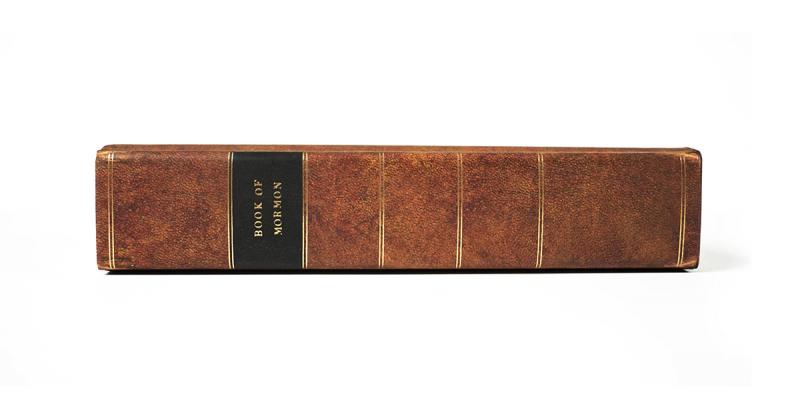
Figure 5Replica of an 1830 edition of the Book of Mormon. Photo by Jasmin Gimenez Rappleye.
On the final day of this week, I hope you will take a few minutes to appreciate the array of administrative patterns and guidelines found in the Book of Mormon. While this sacred record contains lots of inspiring doctrines, faithful histories, genuine spiritual experiences, and elegant expressions of profound truths, the Book of Mormon also contains a surprisingly vast array of instructions for the administration of the Church, in the performance of ordinances, regarding the duties of Church members, and much, much more. All of this is for the building up of the Church of Jesus Christ as a faithful and holy community.
As I say in the chapter below, which was published by the BYU Religious Studies Center, the Book of Mormon is truly the Keystone of our Church Administration. It was consulted much more often than people have realized as the first de facto handbook of instructions for the Church. As much as possible, it was used by every leader. It was followed by every member. It was read often by Joseph Smith, especially as he supervised the publication of the 1837 and 1840 editions.
It was followed, sometimes deliberately, other times in general, but always in detail and in principle. In it was found the words for the baptismal prayer, and for the administration of the sacrament. In it were found instructions for preparing to serve as missionaries. In it a quorum of twelve disciples was established to carry forth the work and words of the Lord. In it members were exhorted to pray in their families. And much, much more. As Joseph Smith once said, "The Book of Mormon is the keystone of our religion." We owe more to the Book of Mormon in our daily observance of life as Latter-day Saints than we usually are aware.
So, consider the helpful list below. Use it as you follow along in this publication. Think: Where would we as a church be without the Book of Mormon? Where would you be personally without this precious information found only in the Book of Mormon? May this book help us all as we truly strive to embody the will of the Lord Jesus Christ in this amazing era of the Dispensation of the Fullness of Times.
What We Learn from the Book of Mormon about Church Ordinances, Policies, Purposes, Programs and Organization
“Ye know the things that ye must do in my church . . . for that which ye have seen me do even that shall ye do. Therefore, if ye do these things blessed are ye, for ye shall be lifted up at the last day” (3 Nephi 27:21-22).
The name of the Church of Christ (3 Nephi 27:8–9)
The Doctrine of Christ (3 Nephi 11:31–40)
The Gospel of Christ (3 Nephi 27:13–21)
Acting in the name of Christ (3 Nephi 27:7)
A single prophet-leader (2 Nephi 5; Alma 1; Helaman 7; 3 Nephi 7:25)
A quorum of twelve (3 Nephi 12:1; 19:12), “give heed unto the words of these twelve” (12:1)
Three leaders with exceptional powers (3 Nephi 28:2–12)
Three Witnesses (2 Nephi 27:12; Ether 5:4)
Presiding (Mosiah 26:37; “to preside and watch over,” Alma 6:1; 3 Nephi 28:18)
Uniformity, “a regulation throughout the Church” (Alma 6:7; 45:21; 62:44)
The process of making administrative changes (Mosiah 29; 3 Nephi 15:1)
Leaders called of God by prophecy (1 Nephi 2:22); “callings” (Jacob 2:3; Moroni 6:4; 7:2; 8:1)
Dividing the people into 12 groups of about 250 people each (3 Nephi 19:4)
Dividing into groups of 50 per priest (Mosiah 18:18), or seven congregations (Mosiah 25:19–23)
The pastoral duties of church leaders (Mosiah 18:19–23)
Consecration of priests and teachers (2 Nephi 5:26; Mosiah 23:16–18, “just men”; 25:19)
Ordination of priests and elders (Alma 6:1)
Ordination by the laying on of hands (Alma 6:1; Moroni 2:2)
Procedures and actual words used in ordaining priests and teachers (Moroni 3:1–4)
Priesthood authority to baptize (Mosiah 18:13; 3 Nephi 11:19–22)
A higher priesthood authority to bestow the gift of the Holy Ghost (3 Nephi 18:14–17; Moroni 2)
Priesthood after the Holy Order of the Son of God, associated with Melchizedek (Alma 13:1–10)
Faith as the first principle in joining the Church (Alma 32)
Examples of study, prayer, change of heart in conversion (Alma 17–26)
Repentance (Mosiah 4:10; 11; 26; Alma 5; 9; 12; 42; Helaman 7; 13; 3 Nephi 30:2)
Confession (Mosiah 26:9; “did confess their sins and were baptized” Helaman 5:17; 16:1; Moroni 6:7)
Offering of a broken heart and contrite spirit (3 Nephi 9:20; 12:19; Moroni 6:2)
Obtaining and retaining forgiveness (Mosiah 4:26; Alma 5)
Covenant making, remembering, and keeping (Mosiah 5:1–10; Mosiah 18:13; 3 Nephi 18)
Taking upon them the name of Christ (Mosiah 5:10–12; 25:23; 3 Nephi 27:25; Moroni 6:3)
Children cannot repent (Moroni 8:19, 22)
Infant baptism is abhorrent (Moroni 8:20–21)
Only those are accountable who are “capable of committing sin” (Moroni 8:10)
“The gate by which ye should enter is repentance and baptism” (2 Nephi 31:17)
The words of the baptismal prayer (3 Nephi 11:26–27)
Baptism by immersion unto repentance (Mosiah 18:14–17; Alma 6:2; 3 Nephi 11:26)
Baptizing in the name of Jesus Christ (3 Nephi 18:11; 27:16; 30:2; 4 Nephi 1:1)
Procedures and words used for giving the Holy Ghost (Moroni 2:2)
Numbering members among the people of the church (Mosiah 6:4; 26:35; Alma 6:3; Moroni 6:4)
The administration of the Sacrament (3 Nephi 18; Moroni 6:6)
Disciples bring the bread and wine (3 Nephi 18:1)
The people sit to receive the sacrament (3 Nephi 18:2)
Priesthood holder ordained to break the bread before it is blessed (3 Nephi 18:5)
The priests kneel down with of the Church (Moroni 4:2)
The words of the sacrament prayers (3 Nephi 18:7, 10-11; Moroni 4–5)
Disciples give it to “all those who shall believe and be baptized” (3 Nephi 18:5)
Blessing children (3 Nephi 17:21–24)
Healing the sick (Alma 15:5–11; 3 Nephi 7:22; 17:7–9; 4 Nephi 1:5; Mormon 9:24)
Patriarchal, father’s blessings (2 Nephi 1–4; Alma 36–42)
Gifts of the spirit, deny not the gifts (Moroni 10)
Fasting in private (Mosiah 27:22; Helaman 3:35; Moroni 6:5)
Praying in private (Enos 1:4; Alma 33–34; 3 Nephi 13, 19)
Praying in the name of Jesus Christ (3 Nephi 18:19, 23, 30)
Worshiping in whatsoever place one might be (Alma 34:38)
Living in thanksgiving daily (Mosiah 18:23; Alma 34:38)
Family prayer (Alma 34:21; 3 Nephi 18:21, “pray in your families unto the Father”)
Parental duties to teach and care for their children (1 Nephi 1:1; Mosiah 24:14–15; Alma 37:35)
Polygamy allowed only if the Lord of Hosts commands his people (Jacob 2:27, 30; 3:5)
Welfare and giving to the poor (Jacob 2:19; Mosiah 4; 18:27; Alma 1:27; 34:26–29; 35:9)
Having property in common, consecration (3 Nephi 26:19; 4 Nephi 1:3)
Tithing (3 Nephi 24:8–10)
Building Zion, the New Jerusalem, in this land (3 Nephi 21:22–25)
Moving to new lands, flight into the wilderness (Lehi, Mosiah)
Purposes and conduct of church meetings and worship (Moroni 6)
Praying together (Alma 6:6; 3 Nephi 19; 4 Nephi 1:2; Moroni 6:5)
Fasting together (Alma 6:6; 4 Nephi 1:2; Moroni 6:5)
Singing (Alma 5:9, 26; Ether 6:9; Moroni 6:9)
Preaching, exhorting, as led by the Holy Ghost (Moroni 6:9)
Meeting “one day in every week” (Mosiah 18:25)
Keep the Sabbath day holy (Mosiah 18:23)
Keeping the commandments of the Lord (4 Nephi 1:12)
Holding conferences (Mosiah 2–5; Alma 5, 7)
Administering covenant renewals (Mosiah 5; Alma 5; 3 Nephi 18)
Voice of the people, common consent (Mosiah 29:25–29; Alma 2:3; 4:16; 27:21–22; Hel. 1:5–8)
Forgiveness (Mosiah 26:30, “as often as my people repent I will forgive them”)
Inviting all to hear the word of God (Alma 6:5; “all are alike unto God,” 2 Nephi 26:33)
Including the children in the congregation (Mosiah 2:5; 3 Nephi 17:25; Moroni 8)
Volunteerism (2 Nephi 26:31, “the laborer in Zion shall labor for Zion”)
Unpaid ministers (2 Nephi 26:31, “if they labor for money they shall perish”)
Priests “should labor with their own hands for their support” (Mosiah 18:24)
No priestcrafts, seeking honor, riches and gain (Alma 1:16; Mormon 8:33, 37)
Temples and temple worship (2 Nephi 5:16; Jacob 2:11; Mosiah 2:1; 3 Nephi 11:1)
Prohibited iniquities, quasi-interview list (2 Nephi 26:32; Alma 1:32; 16:18; Helaman 4:12)
Disapproval of winebibbing and drunkenness (2 Nephi 15:11, 22; Mosiah 11:15)
Condemnation of abuse of women and children (Alma 14; Morianton beats maid-servant 50:30)
Higher levels of worthiness and holiness required (2 Nephi 9)
White and pure garments (1 Nephi 12:11; Jacob 1:19; Alma 5:27; 3 Nephi 19:30)
“Hosanna! Blessed be the name of the Most High God!” (3 Nephi 11:17)
“Anoint thy head, and wash thy face” (3 Nephi 12:17)
Principles of obedience (1 Nephi 22:30–31; Jacob 4:5; Mosiah 5:5, 8; 3 Nephi 12:18)
Sacrifice (3 Nephi 12:19), “pointing to the great and last sacrifice” (Alma 34:14)
Chastity (Jacob 2:28), no adultery (Mosiah 2:13; Alma 30:10; 3 Nephi 12:27–28)
Consecration, dedicate wealth to the kingdom of God (Jacob 2:18–19; 3 Nephi 13:20, 24, 33)
Promised blessings of peace and prosperity (2 Nephi 1:9, 20; Alma 36:1, 30)
The blessing of parents and children (3 Nephi 17:17, 21)
Sins forgiven and sealing powers given (Enos 1:5; Mosiah 26:20; Helaman 10:7)
Overcoming death (“death and hell must deliver up their dead,” 2 Nephi 9:11–12)
Lifted up at the last day (1 Nephi 13:37; Alma 36:33; Nephi 27:22)
Standing before God (Mosiah 16:10; Alma 5:15; Mormon 6:21; 7:6; 9:2; Moroni 8:21)
Eternal Judge of both the quick and the dead (Mosiah 2:27; Moroni 10:34)
Keeping sacred things unwritten and confidential (3 Nephi 28:16)
Not imparting the holy thing to those unworthy or unprepared (3 Nephi 14:7)
Missionary preparation (Alma 17:2–4)
Missionary work (Alma 36:24, “labored without ceasing [to] bring souls unto repentance”)
How beautiful upon the mount, proclaim the gospel (Mosiah 15:10–16)
Patterns of missionary work (Mosiah11; 18; Alma 4-15; 31-34; Helaman 6; 3 Nephi 27:1)
Companions, two witnesses (Alma and Amulek)
Traveling out as a group, then dividing up (the four sons of Mosiah)
Taking the Gospel to the Lamanites (1 Nephi 13; Alma 17–26; 3 Nephi 20)
Opening the door to the Jews and remnant of Jacob (3 Nephi 21)
Understanding God’s plan for the House of Israel (Jacob 5; 3 Nephi 21–22)
Judging the members, common judges (Mosiah 26:29, “him shall ye judge”)
Church discipline and excommunication procedures (Mosiah 26:32; 3 Nephi 18; Moroni 6)
Three witnesses required in order to excommunicate (3 Nephi 18:28–32; Moroni 6:7)
Reactivate those cast out, encourage them to repent (Mosiah 26:29–30; 3 Nephi 18:28–32)
Teachers and teaching (Jacob 1:19; Mosiah 18:25)
“Trust no one to be your teacher” except a man of God, walking in his ways (Mosiah 23:14)
Remembering and nourishing members by the good word of God (Moroni 6:4, 6)
Teach nothing except what the prophets have spoken (Mosiah 18:19)
Teach with power and authority from God (Mosiah 18:26)
Teaching youth (1 Nephi 1:1; Enos 1:1; Mosiah 1:2; Alma 57:21)
Keeping historical records (3 Nephi 23)
Making annual reports (for example, Helaman 6:6, 13)
Scriptures, keeping and guarding them (1 Nephi 6, 9; Mosiah 1–2; Alma 37:1–18)
Restoring plain and precious things that have been lost (1 Nephi 13:34)
Knowing that people will be judged out of the books which shall be written (3 Nephi 27:25)
Creating new congregational units (Mosiah 25:19, Alma’s seven churches)
Giving ecclesiastical units a geographical area (Alma 27:22, the land of Jershon)
Civic duties (Mosiah 29:27, warning if the voice of the people chooses iniquity)
Duty to defend our religion, freedom, peace, wives, and children (Alma 46:12)
Military obligations (Alma 46:20–21) and support those in combat (Alma 27:24)
Forgiving one’s enemies three times (Laban episode in 1 Nephi 3–4; see D&C 98:32, 44)
Rather simple conduct of funerals (2 Nephi 4:12; Mosiah 6:5; 29:45–46; Alma 62:52, 63:3)
Cremation disfavored (compare irregularity of death by fire, Mosiah 17:20; Alma 14:8; 25:11)
Church building decoration, not idolatrous, opulent (Mosiah 11:7–10; Mormon 8:37, “the adorning of your churches”)
Further Reading
John W. Welch, “The Book of Mormon as the Keystone of Church Administration,” in A Firm Foundation: Church Organization and Administration, ed. David J. Whittaker and Arnold K. Garr (Provo, UT: Religious Studies Center, Brigham Young University; Salt Lake City: Deseret Book, 2011), 15–57.
Jan Shipps and John W. Welch, The Journals of William E. McLellin (University of Illinois and BYU Studies, 1994), 18–24, discussing the use of the Book of Mormon in early Mormon preaching.
John W. Welch, “Book of Mormon Religious Teachings and Practices,” Encyclopedia of Mormonism (1992), 1:201–5.
John W. Welch, “From Presence to Practice: Jesus, the Sacrament Prayers, the Priesthood, and Church Discipline in 3 Nephi 18 and Moroni 2-6,” Journal of Book of Mormon Studies 5, no. 1 (1996): 120–38.
[1]. W. H. C. Frend, Martyrdom and Persecution in the Early Church (Oxford: Basil Blackwell, 1965), 171.
[2]. Frend, Martyrdom and Persecution, 226–27.
[3]. Joseph Fielding Smith, comp., Teachings of the Prophet Joseph Smith, 99.
[4]. Frend, Martyrdom and Persecution, 178–88.
[5]. Frend, Martyrdom and Persecution, 167.
[6]. Stark, The Rise of Christianity, 187.
[7]. Stark, The Rise of Christianity, 77.
[8]. Stark, The Rise of Christianity, 80.
[9]. Stark, The Rise of Christianity, 87.
[10]. Stark, The Rise of Christianity, 111.
[11]. Frend, Martyrdom and Persecution, 477–520.
[12]. Frend, Martyrdom and Persecution, 505.
Terms of Use
Items in the BMC Archive are made publicly available for non-commercial, private use. Inclusion within the BMC Archive does not imply endorsement. Items do not represent the official views of The Church of Jesus Christ of Latter-day Saints or of Book of Mormon Central.
Bibliographic Citation
Subscribe
Get the latest updates on Book of Mormon topics and research for free
